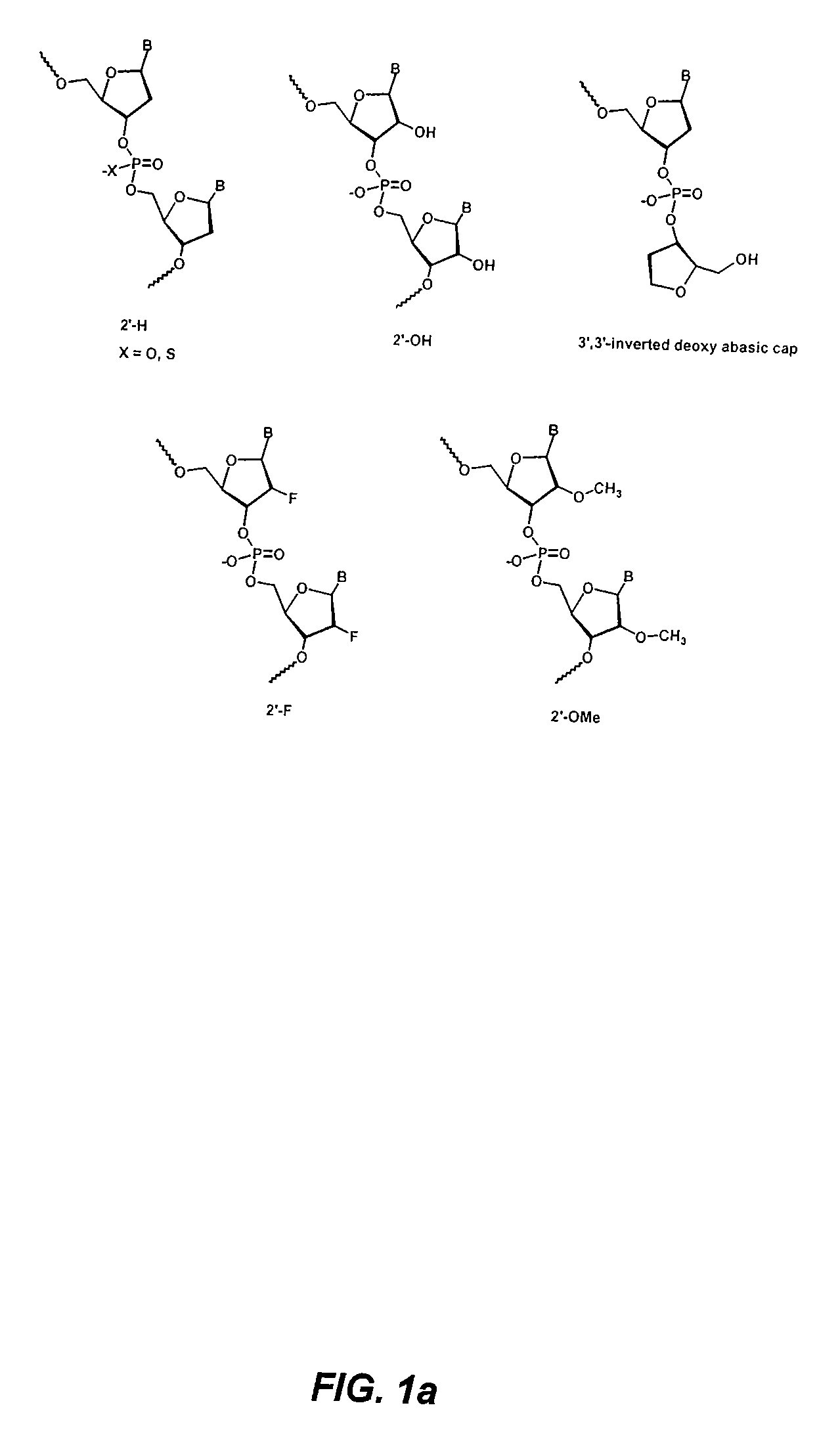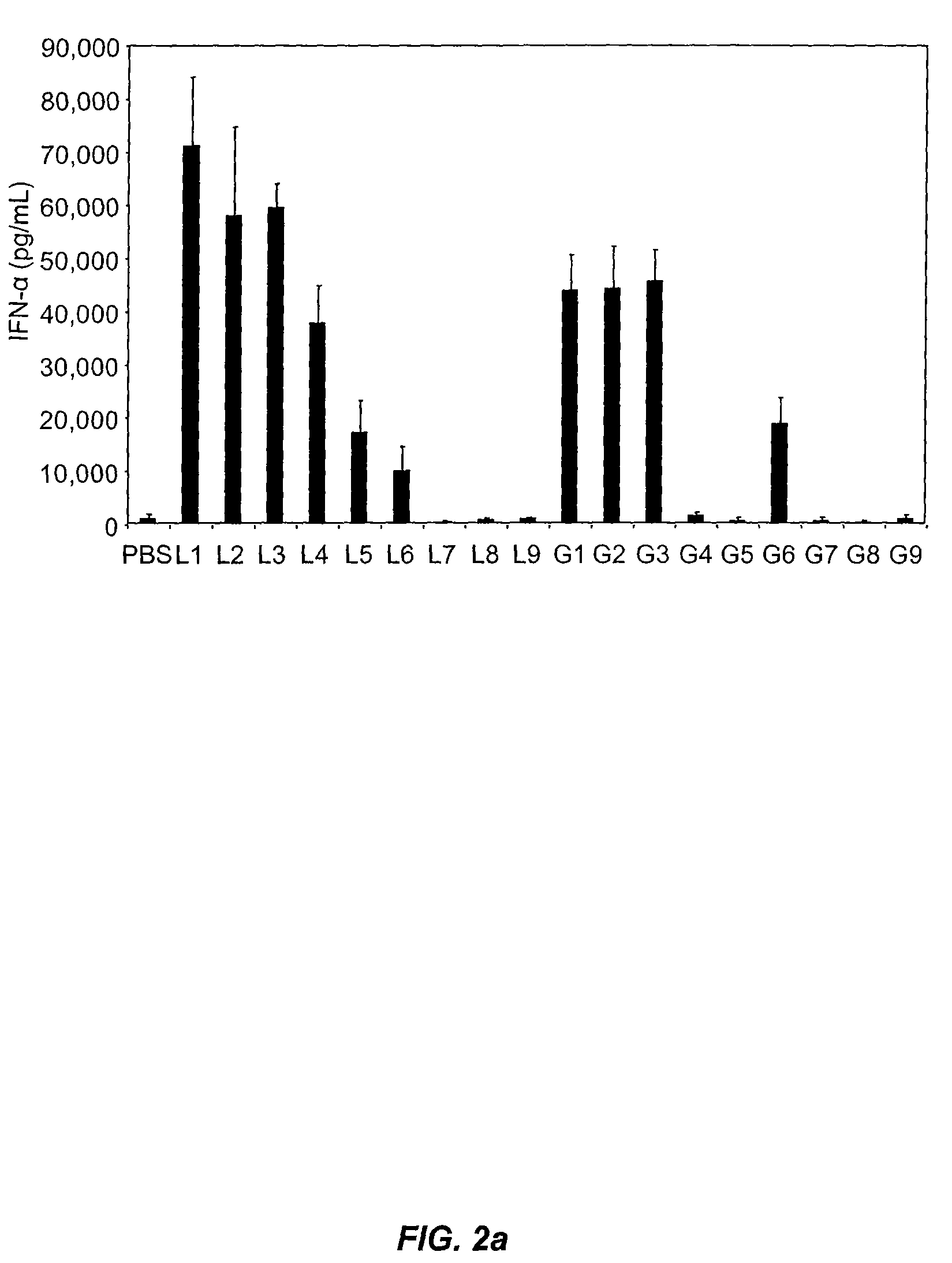Modified siRNA molecules and uses thereof
a technology of sirna and molecules, applied in the field of modified sirna molecules, can solve the problems of limiting the utility of sirna-based therapeutics, poor pharmacokinetic behavior of such molecules, and limiting the exposure to critical cell types in vivo
- Summary
- Abstract
- Description
- Claims
- Application Information
AI Technical Summary
Benefits of technology
Problems solved by technology
Method used
Image
Examples
example 1
Chemical Modification Abrogates Synthetic siRNA Mediated Immune Stimulation and Toxicity In Vivo
[0263]Synthetic siRNA, when delivered efficiently to immune cells at pharmacologically relevant concentrations, can potently induce Type I interferons and inflammatory cytokines, both in vivo and in vitro in human blood. This example illustrates that this potent induction can be completely abrogated by chemical modification of the siRNA. In particular, siRNA containing an antisense strand completely lacking 2′-OH residues, and thus chemically distinct from RNA, retains potent siRNA activity and efficiently abrogates these immunostimulatory effects. Reduction in immunostimulatory activity also ameliorates the toxicity observed upon administration of liposome-encapsulated siRNA. The findings described herein enable the design of siRNAs that efficiently mediate RNA interference and are well tolerated in vivo, thereby having significant implications for the safe and effective development of s...
example 2
Design of Non-Inflammatory Synthetic siRNA Mediating Potent Gene Silencing In Vivo
[0282]This example illustrates that minimal 2′OMe modifications at selective positions within one strand of the siRNA duplex are sufficient to fully abrogate the immunostimulatory activity of siRNA, irrespective of its sequence. In fact, by restricting chemical modification to the non-targeting sense strand of the siRNA duplex, the immunostimulatory activity of siRNA can be abolished while retaining full RNAi activity.
Results
[0283]2′-O-Methyl Modifications within ssRNA Abrogate Immune Stimulation. To examine the extent and type of chemical modification required to inhibit immune cell activation by RNA, 2′OMe nucleotides were selectively introduced into the GU-rich immunostimulatory motif of a single-stranded RNA oligonucleotide (ssRNA) derived from a β-galactosidase (β-gal) siRNA (Judge et al., Nat. Biotechnol., 23:457-462 (2005)). Oligonucleotide sequences used in these studies are provided in Table 2...
PUM
| Property | Measurement | Unit |
|---|---|---|
| mol % | aaaaa | aaaaa |
| mol % | aaaaa | aaaaa |
| mol % | aaaaa | aaaaa |
Abstract
Description
Claims
Application Information
 Login to View More
Login to View More - R&D
- Intellectual Property
- Life Sciences
- Materials
- Tech Scout
- Unparalleled Data Quality
- Higher Quality Content
- 60% Fewer Hallucinations
Browse by: Latest US Patents, China's latest patents, Technical Efficacy Thesaurus, Application Domain, Technology Topic, Popular Technical Reports.
© 2025 PatSnap. All rights reserved.Legal|Privacy policy|Modern Slavery Act Transparency Statement|Sitemap|About US| Contact US: help@patsnap.com



